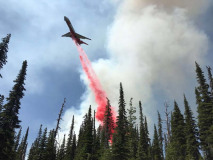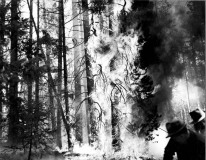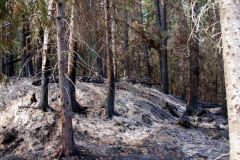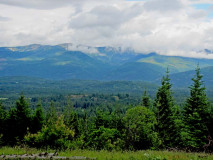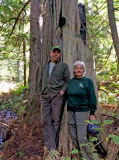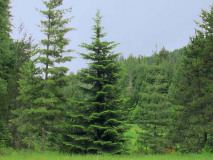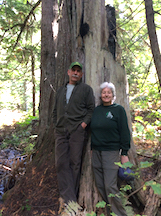No products in the cart.
The Family Forest
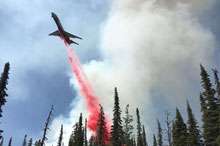
A Struggle to Survive
By Kirk and Madeline David
In the summer of 2015, as we sat on our porch enjoying a sunny afternoon at our northern Idaho home on forested acreage just a few miles south of the sleepy little resort town of Bayview, a quiet and eerie shower of dark ash flakes began to gently drift down upon everything around us. What was this? Could any of the ash still be burning?
We knew the signs, because I, Kirk, am a retired forester who spent several decades involved in wildfire suppression. We immediately hopped into the car and drove a few miles out of our forest and into the valley below for a broader view of the surrounding countryside. From there we saw a huge convection column of heavy smoke rising into the atmosphere.
“Looks like Bayview has got a big one going,” Madeline said.
The wildfire had started near Cape Horn at Lake Pend Oreille and was rapidly spreading uphill into the Three Sisters mountains. That was more than six miles away from our 155 acres of forestland on Cedar Mountain in Kootenai County, yet ash had fallen all around our place. We were worried about our labor-of-love log home in the forest.
Luckily for us, even as we watched the heavy smoke and flame from our distant viewpoint, the wind uncharacteristically reversed direction and blew the conflagration northward. It not only was a close call but most certainly was a reality check for everyone in the area. Foresters and other natural resource managers have constantly remind us, “It’s not a question of if a wildfire will come to your home in tree-blessed Idaho, but when!”
“When” was that day for many other homes in the wildland-urban interface (WUI) near Bayview that were overrun by the intense flames.
Air tanker drops fire retardant over a Panhandle forest. USFS photo.
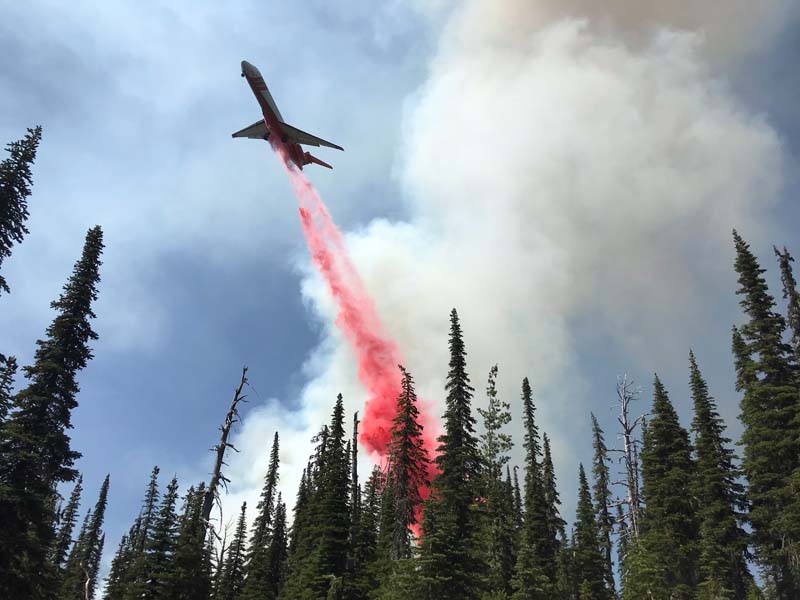
Burning pine to control beetles in Idaho, 1950. USFS photo.
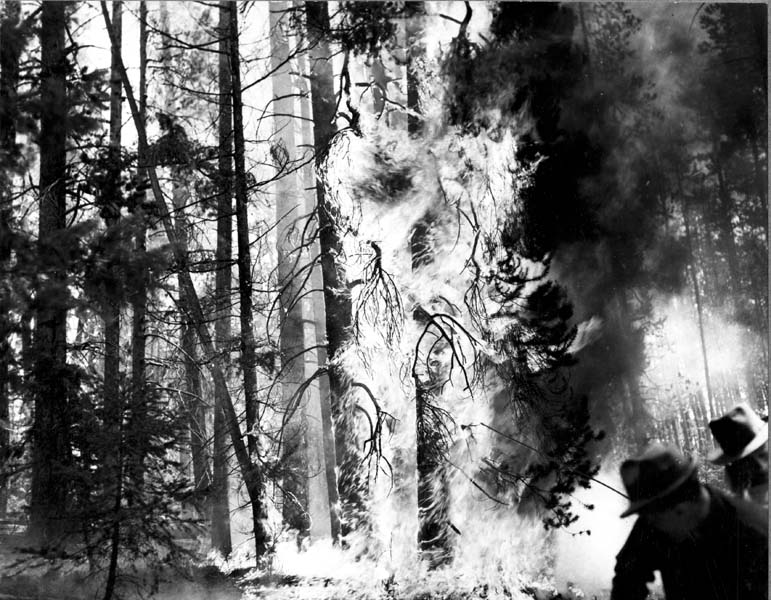
Blackened aftermath of a 2015 Panhandle fire. USFS photo.
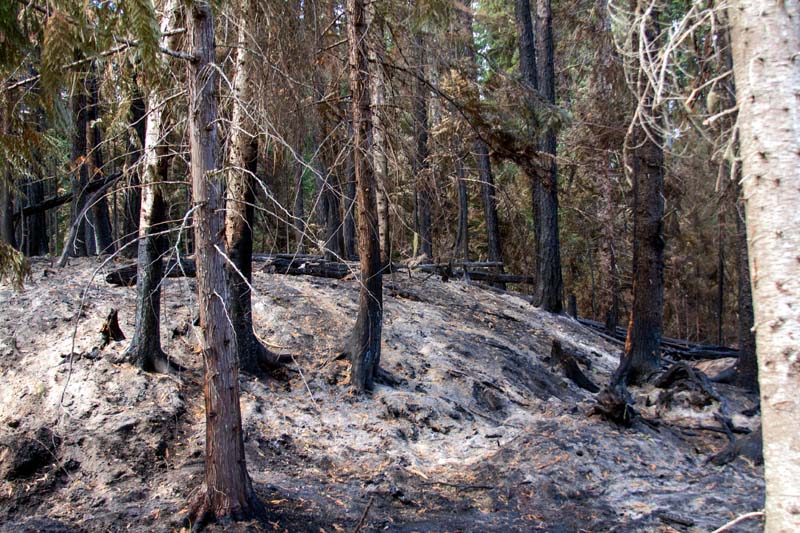
Northern Idaho forestland. Madeline David photo.
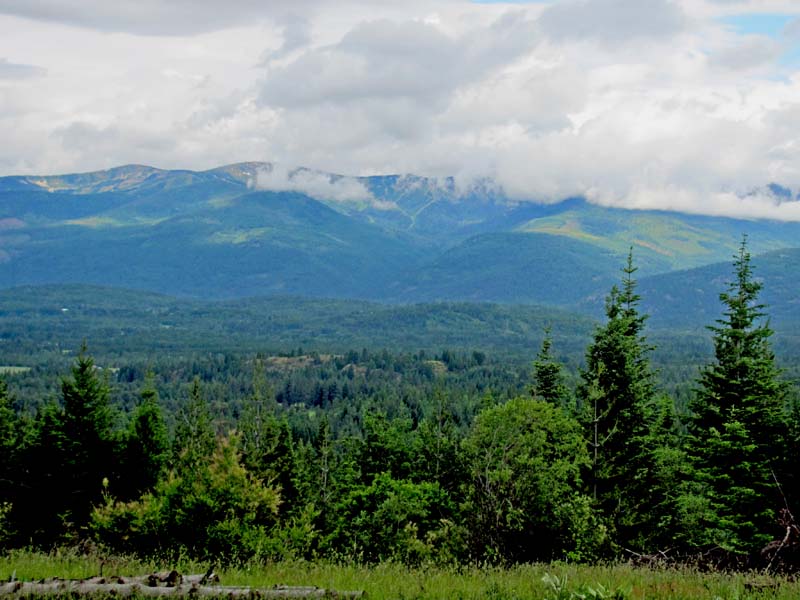
Kirk and Madeline David. Courtesy the Davids.
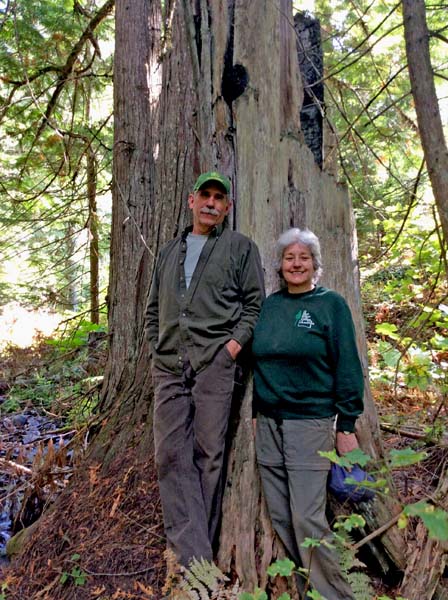
Young Idaho forest. Madeline David photo.
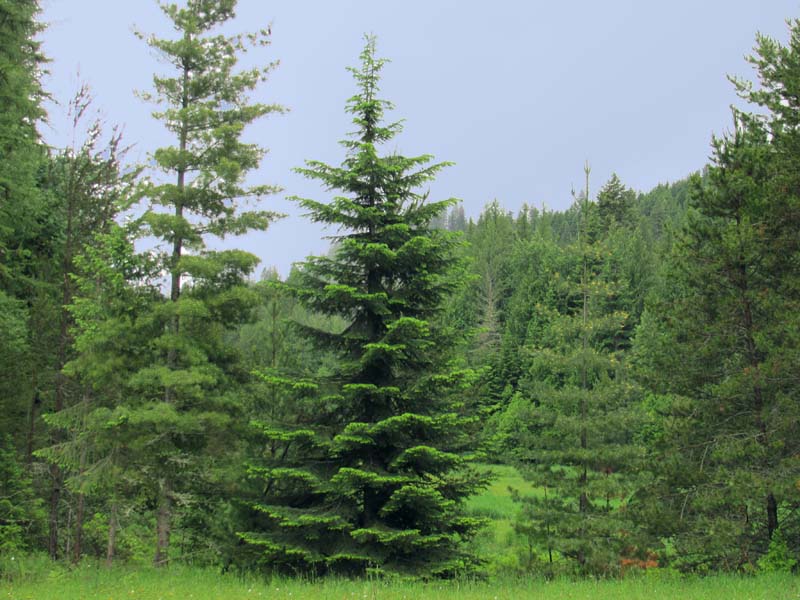
About eighty percent of the time, wildfire in Idaho is caused by human foolishness. But it also has been a natural feature of our environment from time immemorial: even before native or immigrant human populations arrived. And for those of us who live on and care for our little piece of forested paradise here in the most beautiful state in America, the challenges go well beyond the daunting threat of destruction by wildfire. For example, occasional droughts kill or severely stress trees. Competition for water, nutrients, or sunlight can cause stresses that encourage widespread insect infestations, which kill great expanses of woodlands. Ever-present fungal root diseases thrive and increase their lethal progress when trees are stressed. Catastrophes like wildfire are quick to destroy, while conditions like root disease are slow yet persistent.
With all the threats out there, we’ve found that keeping our forest as forest is tough work. By that, we mean being diligent about keeping our management plans up to date, posting our boundary corners and lines, brushing out our skid roads and trails to keep access open, pruning branches for fire mitigation, thinning overcrowded patches to keep saplings open for good growth, planting seedlings in open spots to keep the area well stocked, watching for bark beetle or tip moth damage, cleaning debris-clogged culverts and keeping road waterbars open for drainage, constructing slash handpiles as homes for the small critters, burning large slash piles from our last timber harvest, eating lunch, and then there’s the afternoon’s work ahead. All the blood, sweat, and tears we had invested over a lifetime of ownership could go up in smoke the day a fire crossed our property line. Or our woods could fall prey to insects and disease. We know that the day after we finally depart to meet our maker, our forest could begin to fade away.
Idahoans have access to lots of help from private consultants, non-profits, federal, state, and county agencies to make our property “FireWise,” and to manage land to fight the afflictions trees are prone to. For example, we’re advised to make sure our roads meet clearing and surfacing criteria for access by emergency responder vehicles like fire engines and ambulances. Signs with 911 information are recommended. Guidelines are available for maintenance and clearing of combustible materials in the “home ignition zone.” We can readily get advice on proper silvicultural practices to keep our trees healthy so they clean the air of carbon dioxide, filter the water we drink, and provide habitat for wildlife we enjoy seeing. For anyone who wants to live in and around natural settings, just “letting nature take its course” will not work out so well. Nature constantly changes the status quo through fire, windstorms, ice storms, droughts, floods, insect infestations, and diseases. That’s why we need to exercise well-informed, active improvement of our properties.
Despite all this, the greatest threat to the private forests of Idaho is not fire or disease, but fragmentation and development. In recent times, Idaho has had the fastest-growing human population in the nation, and Kootenai County has been the state’s fastest-growing county. People from everywhere love the quality of life and amazing natural surroundings Idaho has, which many other places already have lost. As more people look for their own little chunk of paradise, Idaho gets chopped into increasingly crowded spaces, developed and paved over. The natural resources and open spaces that make the state desirable are being removed.
In 2008, we took a training course on succession planning for forest owners. This changed—or perhaps “enriched” is a better word—the trajectory of our interest in forest conservation. Succession planning is often characterized as “the human side of estate planning.” Estate planning is what I affectionately call “all the legal mumbo-jumbo” that is required. But estate planning doesn’t really matter much if we don’t nurture and develop the family relationships that carry across generations, to help ensure someone will be willing and able to continue the family legacy. A big part of succession planning is encouraging and allowing descendants the opportunity to join in activities on the land and develop their own reasons why this is “their” forest.
In applying these principles to our own landowning situation, we became passionate about helping others to engage in the critical process of passing their beloved land to the next generation. We have no children, so finding a way to keep our Idaho forest intact into the future involved placing a conservation easement on it. Through such an agreement, certain chosen rights to the property (usually subdivision and most development rights) are transferred to a recognized land trust or conservancy organization that holds the rights in perpetuity. The land remains our private property and can be sold or deeded if and when we desire, but it will stay intact as one parcel and can continue to be a forest.
We now volunteer to facilitate workshops called “Ties to the Land” that help people plan their legacies by setting up ways to determine what will happen to their land after they are no longer around to care for it. In the past dozen years, we’ve seen landowners come up with amazingly creative family legacy plans. For instance, one brother and sister received separate but adjacent parcels from their parents. They realized that continued parcelization would eventually reduce these lands to an economy of scale too small for effective management, so they rejoined their parcels into one piece and formed an LLC to manage the property. The next generation, their children, are now actively involved. Future generations will be able to join the stewardship partnership of this family heritage for the enjoyment and income it will offer.
“This workshop was so helpful,” an early participant told us. “I felt so alone, thinking we were the only ones facing our particular set of family challenges. Hearing and sharing the stories and ideas brought forth in this workshop has given me valuable insight to tackle our challenges and keep our forest and our family together.”
“Ties to the Land” workshops will be held in Moscow on March 29 and in Sandpoint on April 11. A nominal fee is charged for materials and refreshments. For more information, call (208) 683-3168 or email [email protected] or [email protected].
This content is available for purchase. Please select from available options.
Purchase Only
Purchase Only

